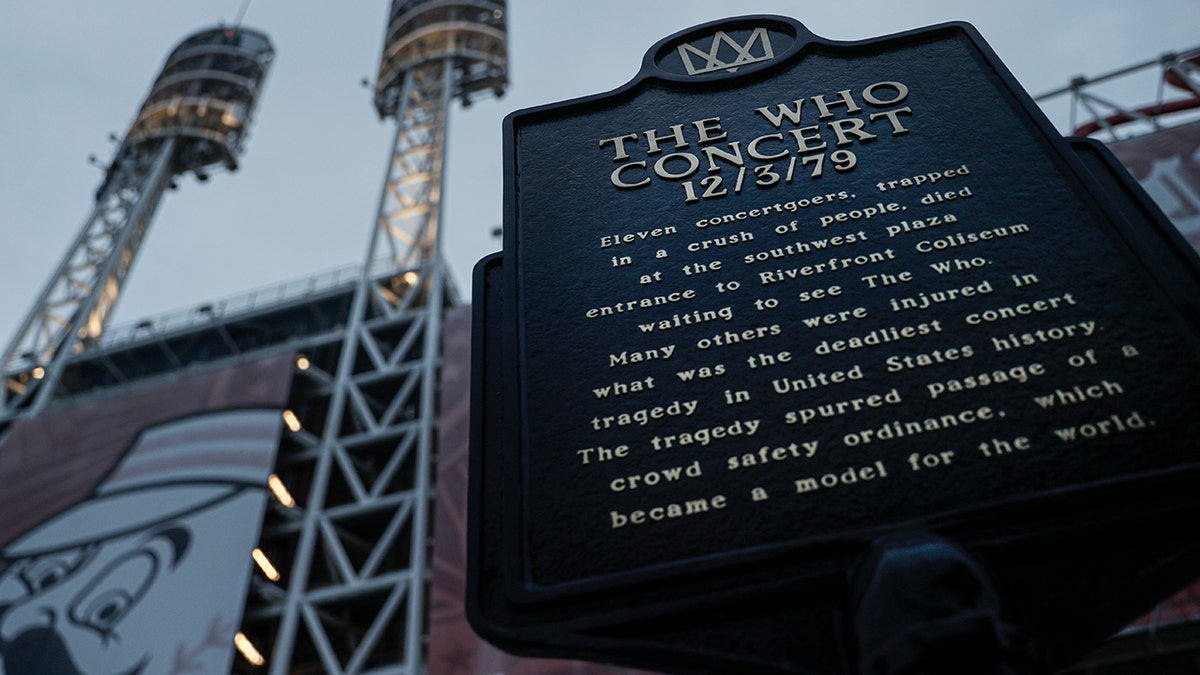Fox News Flash top headlines for Dec. 3
Fox News Flash top headlines for Dec. 3 are here. Check out what's clicking on Foxnews.com
The British rock band The Who announced Tuesday night that it will stop in the Cincinnati area as part of its upcoming tour, performing there for the first time in 40 years since 11 people were killed in a pre-show stampede outside a concert in the city at the height of their fame.
PUSSY RIOT TO EMBARK ON NORTH AMERICAN TOUR TO BENEFIT PLANNED PARENTHOOD
The Rock & Roll Hall of Fame band will play April 23 at Northern Kentucky University’s BB&T Arena.
On Dec. 3, 1979, 11 people were killed and another two dozen were injured when a crowd of thousands lined up for first-come, first-serve tickets began to stampede outside what was previously named the Riverfront Coliseum. The two sites are on opposite sides of the Ohio River just seven miles away from each other. The deaths paved the way for the crowd safety ordinance.

In this Wednesday, Nov. 20, 2019 photo, a memorial plaque for eleven concertgoers killed at a 1979 concert stands between Great American Ballpark and Heritage Bank Arena, in Cincinnati. Tragedy four decades ago linked the British rock band The Who to a small suburban city in Ohio. (AP Photo/John Minchillo)
The band’s announcement came on the 40th anniversary of the tragedy after WCPO-TV in Cincinnati aired a documentary featuring interviews with lead singer Roger Daltrey and guitarist Pete Townshend, the remaining original members of the British band that emerged in the 1960s featuring songs of youthful rebellion such as “My Generation” and its “Summertime Blues” cover.
Both have said they’ve been haunted by the tragedy. Townshend recently told The Associated Press he was looking forward to discussing it in Cincinnati.
“Now we can have a conversation about it when we go back,” Townshend said.
“We will meet people and we’ll be there. We’ll be there. That’s what’s important,” he continued. “I’m so glad that we’ve got this opportunity to go back.”

FILE - In this Dec. 3, 1979 file photo, a security guard and an unidentified man look at an area where several people were killed as they were caught in a surging crowd entering Cincinnati's riverfront coliseum for a concert by the British rock band The Who. (AP Photo/Brian Horton, File)
The band is adding the concert to its “Moving On!” tour 2020 dates.
The Who said it will donate a portion of proceeds from the Cincinnati area concert to a memorial scholarship fund benefiting students in the Cincinnati suburb of Finneytown. Three of the 11 killed, including two 15-year-old girls who were the youngest victims, had attended Finneytown High. Daltrey visited a Finneytown High School memorial site in 2018 and the band has for years supported the scholarship effort there.
CLICK HERE FOR THE ALL-NEW FOXBUSINESS.COM
The band didn’t know about the tragedy until the concert was ending. Longtime manager Bill Curbishley had made the decision to have the show go on, warning Cincinnati authorities that they wouldn’t be able to control the crowd if the concert was called off.
“Despite everything, I still feel inadequate,” he told WCPO. “I don’t know about the guys, but for me, I left a little bit of my soul in Cincinnati.”
The Associated Press contributed to this report.





















